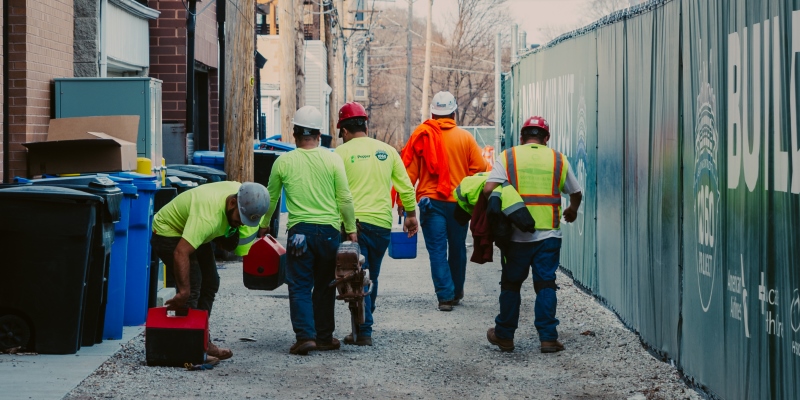Here’s how government can help permanent immigrants find work and earn good money

Over the last few months there’s been a significant increase in Canadian media coverage of the dramatic surge in “temporary” immigration—namely, non-permanent residents (NPRs), which include international students and foreigners here on various work visas—and the impact on rental housing and government services. But what about the link between NPRs and the labour market performance of permanent immigrants?
The Trudeau government plans to boost Canada’s labour force and grow the economy through high levels of permanent immigration, which is on track to reach 500,000 per year by the middle of the decade. Less than a decade ago, permanent immigration was running at barely half of the government’s target for 2025.
Crucially, however, Ottawa’s strategy to use immigration to drive overall economic growth depends in part on how well new permanent immigrants perform in the job market—that is, their ability to find employment and earn decent incomes. To this end, increasing the number of NPRs enlarges the pool of potential applicants for permanent residence who have prior work experience and/or educational training in Canada. And according to a recent study published by the Fraser Institute, these applicants are more likely to make above-average contributions to economic growth in Canada compared to applicants who lack this experience and training. In other words, NPRs will likely become more productive permanent immigrants than newcomers who were never NPRs.
In addition to the linkage between NPRs and the labour market performance of future permanent immigrants, a sizable body of research highlights the importance of proficiency in one of Canada’s official languages to the labour market outcomes of immigrants. To this end, the selection process for permanent residents should give more weight to language proficiency than is currently the case.
Alternatively, the government could require applicants for permanent residence to demonstrate a minimum level of language proficiency to gain admission through the economic immigration stream. And relatedly, the government could increase funding for language training and other post-landing services for new permanent residents, many of whom struggle to adapt to life in Canada.
Research also shows that younger immigrants generally have better labour market outcomes than older immigrants, which suggests the government should give greater weight to an applicant’s age in the permanent resident selection process.
Governments could also relax professional licensing and other restrictions that prevent immigrants with education and training broadly equivalent to their Canadian-born counterparts from working in fields such as engineering and health care. Professional and occupational licensing and certification are provincial government responsibilities, and some provinces are taking steps to reduce unnecessary barriers to occupational entry. Still, more must be done to address these types of impediments to the labour market success of immigrants.
Finally, the federal government recently announced a potentially important set of modifications to the criteria used to select permanent residents under the Express Entry system, which expedites the permanent residence application process for skilled workers. The modifications will allow Canada to issue invitations to prospective residents with specific skills and training. While it’s too early to assess the effects of this policy change, there may be a risk in giving a preference to applicants with very specific skills in current demand while necessarily de-emphasizing more general “human capital” indicators such as formal educational attainment and language capability.
A workforce endowed with high levels of general human capital (rather than more specific occupational skills) may be more capable of undertaking the continuous retraining and re-education that can help workers adapt to changes in technology and workplace conditions and practices.
Simply put, the federal government, and governments across Canada, can do more to improve the prospects of permanent immigrants and their contributions to the Canadian economy.
Authors:
Subscribe to the Fraser Institute
Get the latest news from the Fraser Institute on the latest research studies, news and events.


